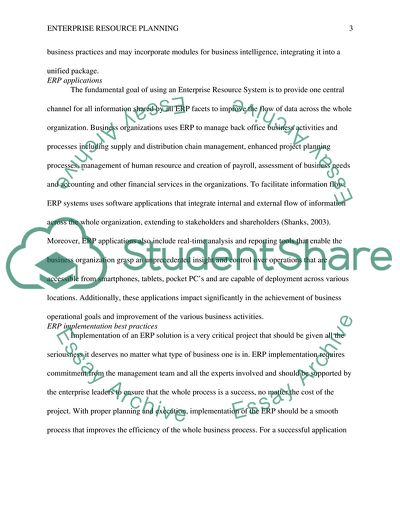Cite this document
(ERP Implementation Best Practices Research Paper Example | Topics and Well Written Essays - 1500 words, n.d.)
ERP Implementation Best Practices Research Paper Example | Topics and Well Written Essays - 1500 words. https://studentshare.org/information-technology/1865540-erp-implementation-best-practices
ERP Implementation Best Practices Research Paper Example | Topics and Well Written Essays - 1500 words. https://studentshare.org/information-technology/1865540-erp-implementation-best-practices
(ERP Implementation Best Practices Research Paper Example | Topics and Well Written Essays - 1500 Words)
ERP Implementation Best Practices Research Paper Example | Topics and Well Written Essays - 1500 Words. https://studentshare.org/information-technology/1865540-erp-implementation-best-practices.
ERP Implementation Best Practices Research Paper Example | Topics and Well Written Essays - 1500 Words. https://studentshare.org/information-technology/1865540-erp-implementation-best-practices.
“ERP Implementation Best Practices Research Paper Example | Topics and Well Written Essays - 1500 Words”. https://studentshare.org/information-technology/1865540-erp-implementation-best-practices.


